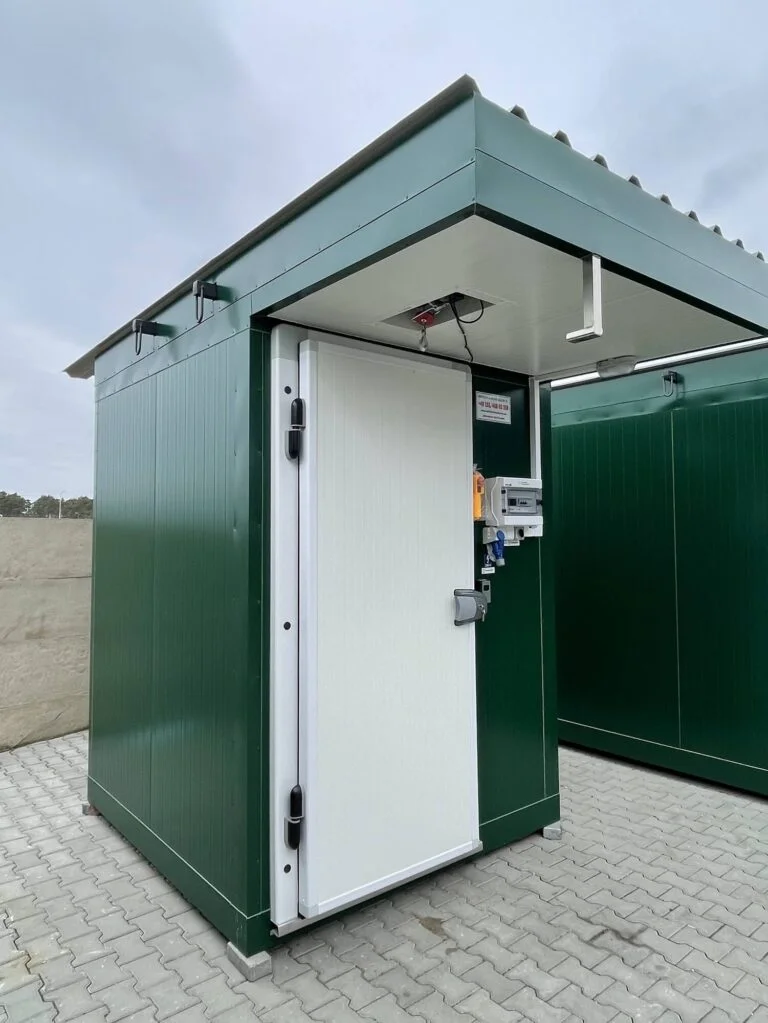Automation, Analytics and AI-Driven Workflows in Modern Commercial Property Management
Digital commercial property management is shifting from basic record-keeping to automated, analytics-driven and AI-supported workflows that cover the entire lease and operational lifecycle—from issuing invoices to utility billing, service charge reconciliation and tenant communication. The foundation is data consistency and repeatable processes, ensuring that every operational decision relies on reliable, up-to-date information. Where manual handling is prone to errors and delays, advanced property management platforms take over as an “execution engine,” reducing time-consuming tasks and consolidating all information in one place.
In practice, this means automated generation of sales documents, multi-method utility billing, indexation of rent rates based on published indices, monitoring of lease securities and a digital workflow for cost invoices—all seamlessly integrated with reporting and quick document access. When combined with intelligent data filtering, drill-down capabilities and a real-time AI assistant, it creates an environment where property and asset managers can work methodically and predictably.
How does financial automation streamline settlements, reduce manual work and ensure consistency?
The financial side of commercial real estate requires precision, discipline and strict adherence to deadlines—yet must remain flexible enough to cover diverse lease structures. Automated issuance of sales documents in a dedicated module allows hundreds of invoices to be generated within minutes, across multiple buildings thanks to portfolio invoicing. The same environment handles bulk corrections and electronic deliveries, standardising document workflows and creating a unified process for accounting and operational teams. The result is consistent billing logic without discrepancies caused by manual calculations.
Utility billing is often challenging due to mixed methods and complex metering structures. The system supports automated utility billing based on area, readings, lump sums or multi-level meter hierarchies. Once meters, areas and billing rules are configured, each settlement period is calculated consistently—eliminating common copy-paste errors.
In the area of service charges, where annual budgets must be reconciled in line with contractual parameters, fully automated service charge reconciliation enables the generation of individual tenant settlements in a single action, along with all necessary documents such as debit notes and detailed calculation summaries. Real-time budget utilisation views across categories and time frames help control cost dynamics throughout the operating year.
Lease indexation is another frequent bottleneck. After published index values are entered into the system, subsequent invoices automatically include indexed amounts, and any corrective entry appears on the next document. This eliminates tedious spreadsheet work and version mismatches commonly circulating via email.
Accounts receivable management requires more than reports—it demands tools for consistent debt collection. Cross-sectional aged receivables reports with drill-down allow users to zoom from the entire portfolio to a single debtor within seconds. The module generates and tracks tenant correspondence, issues interest notes and—if needed—launches extended alerts and notifications (emails or SMS) customised by content and frequency. Teams can work according to predefined workflows, while the system ensures deadlines and completeness.
On the purchasing side, the process is supported by a digital document workflow—from registering cost invoices, through acceptance paths defined by department, cost category or financial limits, to payment packages for banks with White List and split payment checks. The same logic links approved purchase orders to invoices, validating categories, budgets and amounts, and if discrepancies arise, directing documents for additional approval. From a compliance and audit perspective, this provides a fully traceable decision history.
- Automated sales invoicing with bulk corrections and electronic deliveries.
- Utility billing for complex metering structures and multiple allocation methods.
- Automated service charge reconciliation with supplementary documentation.
- Rent indexation based on published index values.
- Debt collection with reports, interest notes and email/SMS alerts.
- Electronic purchasing workflow with payment packages and tax checks.
How do complete registers, archives and document workflows create a unified source of truth across the portfolio?
Without a strong data backbone, automation would be nothing more than scripts. That is why extensive registers are critical: SPVs and owners, properties (from land plots and GPS location to land and mortgage registers, GLA parameters and registration data), tenants and suppliers with full contact details, as well as lease units. Units can be mapped on floor plans, grouped, shown in units or square metres, and linked to utility meters. Each lease can maintain over 150 parameters, allowing even complex contractual clauses to be represented accurately and processed safely during billing and settlements.
Documents—both sales and purchase—exist within a single ecosystem. The document archive accepts scans, PDFs and images and enables contextual text search. Entering a keyword such as “rent” returns documents containing it in the file name or within the document text. Thanks to interconnected module screens, the archive is always “at hand,” whether working on a lease, a counterparty record or a settlement. The purchasing workflow is enhanced with OCR, automatically reading data from emailed files or server scans and linking the document to the appropriate system record.
Parallel to this, the purchase order module structures expenses from intent to settlement. Orders have their own approval paths, attached documents, cost categories and budgets. Once approved, they automatically link to invoices, validating amounts and budgets—preventing unwanted cost deviations throughout the year. Lease security registers complete the ecosystem with review reports, required value calculations, validity dates and automatic reminders and email alerts for expiring or insufficient securities.
In tenant relations, transparency and quick access to information are essential. The Tenant Portal provides online access to settlements, invoice copies, reporting of turnover data and tracking changes over time. In office buildings, a virtual reception can handle visitor check-ins via a touch panel, provide visit statistics and—through thermal camera integration—support safety procedures. This streamlines the entire flow of operational information from source data to on-site action.
https://novo-property.com/en/property-management-2/ — What does this solution cover and what areas does it support? Novo provides a comprehensive suite of modules for managing commercial real estate portfolios: registers of owners and SPVs, properties, tenants and lease units; automated invoicing, utility billing and service charge reconciliation; lease indexation; debt collection with interest notes and alerts; and a full digital purchasing workflow with OCR, purchase orders and payment package generation (with White List and split payment controls). The platform also includes a document archive with contextual search, a Tenant Portal, virtual reception, ESG monitoring, extensive reporting (rent roll, NOI, occupancy, income/cost reporting, securities, budgeting) and an AI assistant for fast data insights. Novo specializes in digitising and automating property and asset management processes, supported by tight integration between financial and operational modules and links to national registers (GUS/NIP). Its value comes from complete lifecycle coverage and transparent metrics that can be analysed through filters and drill-down views—without overstating capabilities beyond what the platform demonstrably provides.
- Registers: SPVs/owners, properties (GPS, land registers, GLA), tenants/suppliers, lease units with meters.
- Archive with full-text search and contextual document links.
- OCR and digital purchasing workflow plus purchase orders with budget control.
- Tenant Portal and virtual reception for streamlined information exchange.
- Lease securities with reports, calculations and automated alerts.
How do management analytics and an AI assistant translate into instant answers and better portfolio control?
Even the best-organised data does not create results without tools that properly slice it and translate insights into management actions. The system provides ready-made analytical reports, from traditional rent roll and NOI to occupancy status, cross-sectional income and cost reports, receivables, securities and budgeting views. These are not static templates—reports come with advanced filtering; in leases or sales documents, some views have more than 20 analytical filters. Results can be exported to Excel with one click for further processing or sharing.
At the same time, drill-down shortens the path from portfolio-level KPIs to operational detail. From an overdue balance report, the user can zoom into a specific tenant, document and individual line item. In debt collection, this accelerates identification of high-priority cases. In securities, it provides an up-to-date view of values and validity dates with automated reminders. In budgeting, filters and cross-sections reveal variances by category, period or lease unit—without building new spreadsheet versions offline.
The built-in AI assistant plays an increasingly important role, combining system knowledge (guides, usage scenarios) with real-time data insights. Users can ask questions—about a tenant’s current rent rate, available documents in the archive or details of their settlements—and receive answers instantly, directly from operational data. This conversational model eliminates “manual searching” and ensures that decisions are based on the same, consistent datasets that drive billing and workflows.
It’s also worth mentioning ESG monitoring: property descriptions and analyses including required and obtained certifications (with map-based visualisation), sustainability policies, tenant and visitor amenities, and community initiatives. Recording and observing resource consumption trends—such as electricity or water—helps forecast future usage and set reduction policies. These are not separate worlds: the same underlying data powers management reporting and provides the context for conversations with tenants and owners.
- Reports: rent roll, NOI, occupancy, income/costs, receivables, securities, budgets.
- Analytical filters (including 20+ in selected areas) and Excel export.
- Drill-down from KPI to document and line item.
- AI assistant providing real-time answers on rents, documents and settlements.
- ESG: certifications, policies, amenities, community initiatives, resource monitoring.








